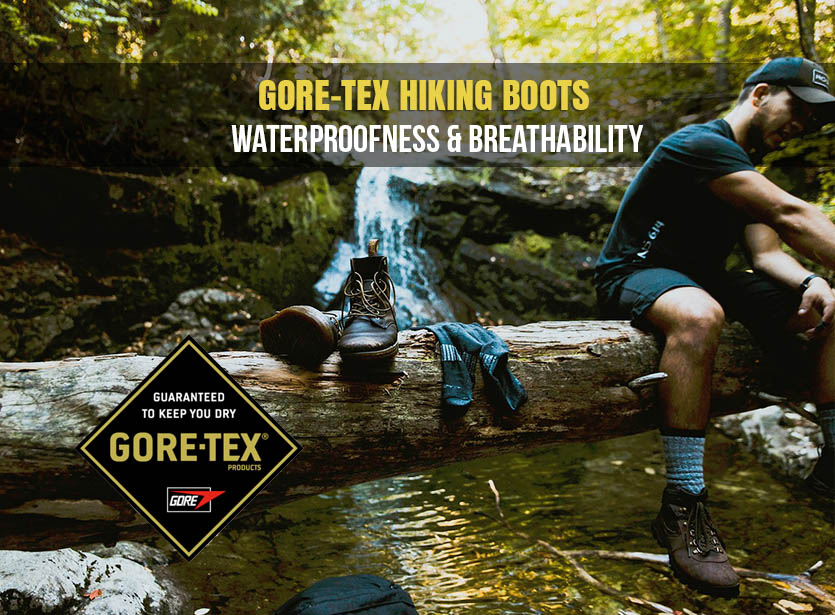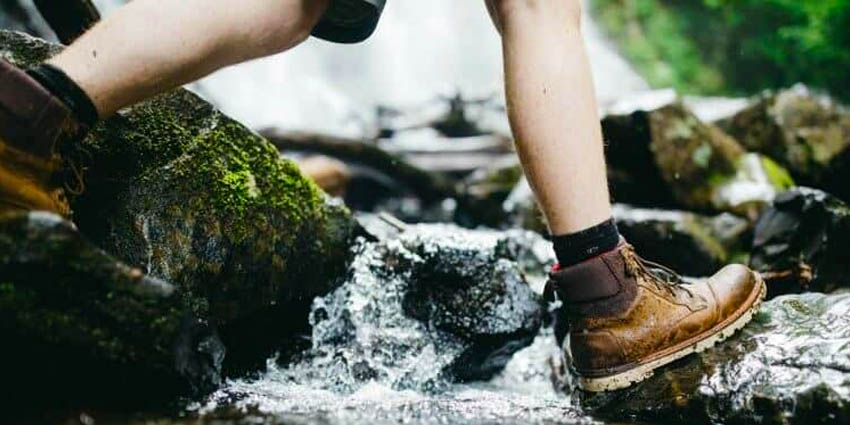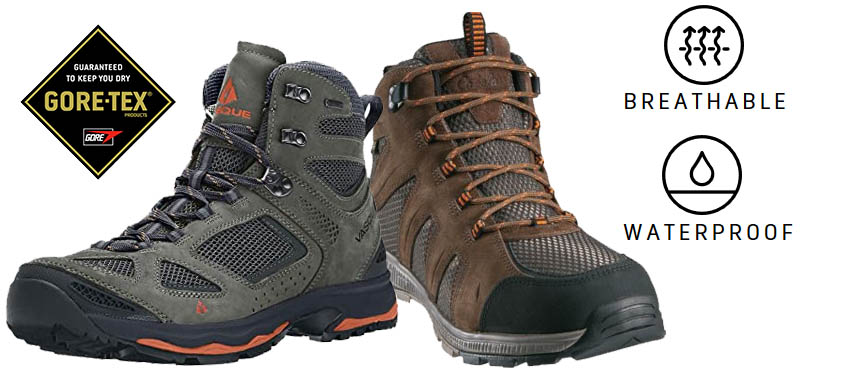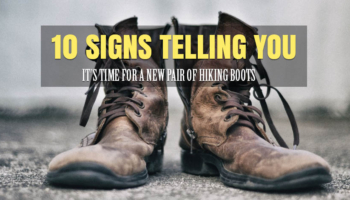
Even if you’re new to hiking, you know that a good pair of hiking boots can make the difference between a good and bad hike. Selecting the best hiking boots isn’t effortless, and there are numerous aspects to consider before buying.
One of the many factors you have to consider is whether you need your boots have to be waterproof or not. Professionals say that hikers split into two main categories: hikers who only look for impressive breathability, skipping waterproofness for good, and hikers who prefer protection against the elements, even if it comes with sacrifices.
Things may be easy for the experienced hikers who already know what they value most while hiking, but the situation can be quite confusing for entry-level hikers. New hikers don’t know anything about waterproofing technology, performance, breathability, and such. Keep reading for the details.
What is waterproofing in hiking boots?
The majority of reliable hiking boots/shoes defined as “waterproof” come with a lining made of a waterproof membrane right under the outer shell. Nine times out of ten, it’s Gore-tex membrane, made up of expanded ePTFE, and placed between a knit backer and a lining. The three pieces are sewn into a sock (similar to a “bootie”), providing the upper’s best comfort.
Gore-tex is the most common waterproofing technology in footwear, even if some manufacturers utilize their own waterproofing methods.

The waterproof membrane isn’t enough for hiking, which is why the upper part of the hiking boots is made with a water-resistant material. Sometimes, the upper part comes with DWR (durable water repellent) coating to perform better in wet conditions.
The treatment loses its efficiency in time, so proper care and maintenance are recommended. Some hikers utilize a specific method for their boots throughout the whole year, but a wash-in or spray-on revival product can be used for re-applying the DWR coating.
Do you care for breathability?
Even if waterproofness may seem essential for your hiking, you should see the whole picture. When your boots seal moisture out, they can also seal it in. Briefly said, waterproof boots won’t breathe as effective as non-waterproof builds (no matter what the manufacturers claim).

Non-waterproof boots are made with breathable materials and better-ventilated mesh liners so that sweat will escape a lot easier. Still don’t get it? Imagine that you’re walking in the rain with a plastic bag around your head. Even if water doesn’t get on your hair, your hair will get damp and sweaty after some time. It’s going to be the same for your feet if you’re hiking in humid and warm conditions all day long.
Gore-tex membranes are made to let moisture escape from your boots, providing ventilation from the inside out. They work both in mild and cold temperatures and may get hot in the middle of a summer hike.
Is waterproof footwear genuinely practical?
Sadly, no hiking boots are 100% waterproof. For obtaining complete waterproofness, breathability has to be sacrificed. Remember your cute rubber boots back when you were a child and step carelessly into puddles of water? Even if they kept water away from your feet, you would also feel the sweat building up.
For obtaining waterproofness, without losing breathability, some compromises need to be made. Waterproof boots will protect you from water, but only for some time. Let’s not forget that sand, dirt, and grime may also affect the waterproof membrane (which is delicate), eventually affecting the ability to protect against sweat and moisture, working its way through. Regularly cleaning the boots could maintain your shoes’ waterproofness abilities, but it’s not going to do much if you’re always taking the trails.
Height of the boots
Even if waterproof liners count for keeping water outside the boots, there’s not much you can do about water flooding in over the top while you’re trying to cross a deep river. Hiking boots with high ankles are a better choice, even if they will not eliminate the risk of wetting your feet.
Waterproof, Water-Resistant, and Water-Repellent- how do these terms differ?

Should you go shopping for hiking boots, you will run into these terms a lot. The words aren’t necessarily generic, and the differences are somewhat challenging to highlight.
Any boots with Gore-Tex will provide good waterproofing, but you should always take it with a grain of salt.
Hiking boots defined as water-resistant are less performant than models depict as waterproof, as they handle a bit of rain. Anything more than that will go inside the shoes, for sure.
Water-repellant boots are typically surface-coated with a treatment (DWR is one) that repels light moisture when in contact. Water-repellency loses efficiency in time, so regular treatments are required.
When it’s recommended to buy waterproof boots?
You don’t always need waterproof hiking boots, but some situations require waterproof footwear. Cold weather, damp conditions, snowy or muddy trails will be more comfortable to take if you’re wearing waterproof boots. Shallow stream crossings, winter hikes, and hiking in wet climates are situations where waterproof hiking boots become mandatory.
It would help if you also put on waterproof hiking boots when hiking in zones with daily rain showers, cold places where the risk for sweaty feet is minimal.
All in all, you should get non-waterproof footwear in ultra-dry climates or when you have to cross deep bodies of water, with your shoes drying as you’re moving. Moderate rain and snowy trails make the most common situations where waterproof hiking boots are needed.
Our final thought
When selecting your hiking boots, there are several things to consider, with climate and terrain as some of the most significant to name. If you’re hiking in areas with extreme conditions (dry and hot desert or river-ridden trails), it’s better that you go with non-waterproof footwear or packing at least a second pair of boots.
Some experienced hikers and backpackers go with non-waterproof boots with trail-ready gaiters over the top; they will add protection in inclement weather.
At the end of the day, it’s all about how you feel in your boots. Should you be in the beginning, it may take some trial and error until you figure out what type of hiking boots works best for you. Hiking without getting your feet wet is one of the main goals when buying hiking boots.








